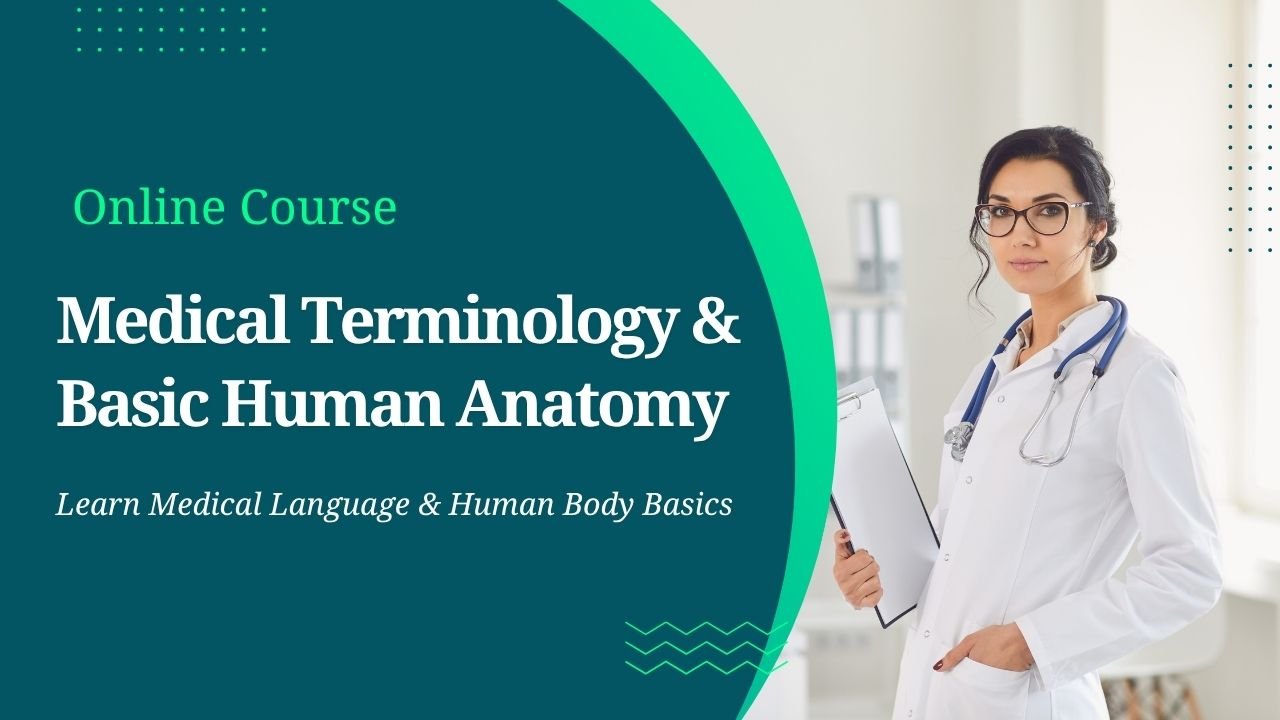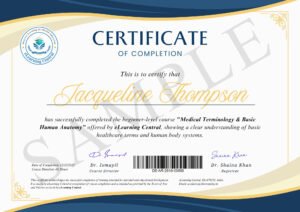Medical Terminology & Basic Human Anatomy

About Course
Medical Terminology & Basic Human Anatomy provides a comprehensive introduction to the language and structure of the human body, specifically tailored for learners entering the healthcare field. This course is entirely theory-based and structured into four detailed modules covering essential medical vocabulary and anatomical systems.
You’ll begin by learning how medical terms are constructed — using prefixes, roots, suffixes, and combining forms — and how to interpret common abbreviations and symbols. As the course progresses, you’ll explore anatomical directions, body planes, and body cavities, laying the groundwork for understanding spatial orientation in medical imaging and descriptions.

A major portion of the course is dedicated to an overview of the human body systems, where each lesson breaks down key functions, major organs, and system-specific terminology. The final module guides you in applying terminology in practical contexts, such as patient records, clinical procedures, and case scenarios.
This content-driven structure ensures that you not only learn medical terms but also understand where and how they are used in real healthcare settings.
Course Content
Introduction to Medical Terminology
-
What is Medical Terminology?
-
Word Parts – Prefixes, Roots, and Suffixes
-
Combining Forms and Rules
-
Pronunciation & Spelling Guidelines
-
Abbreviations & Symbols